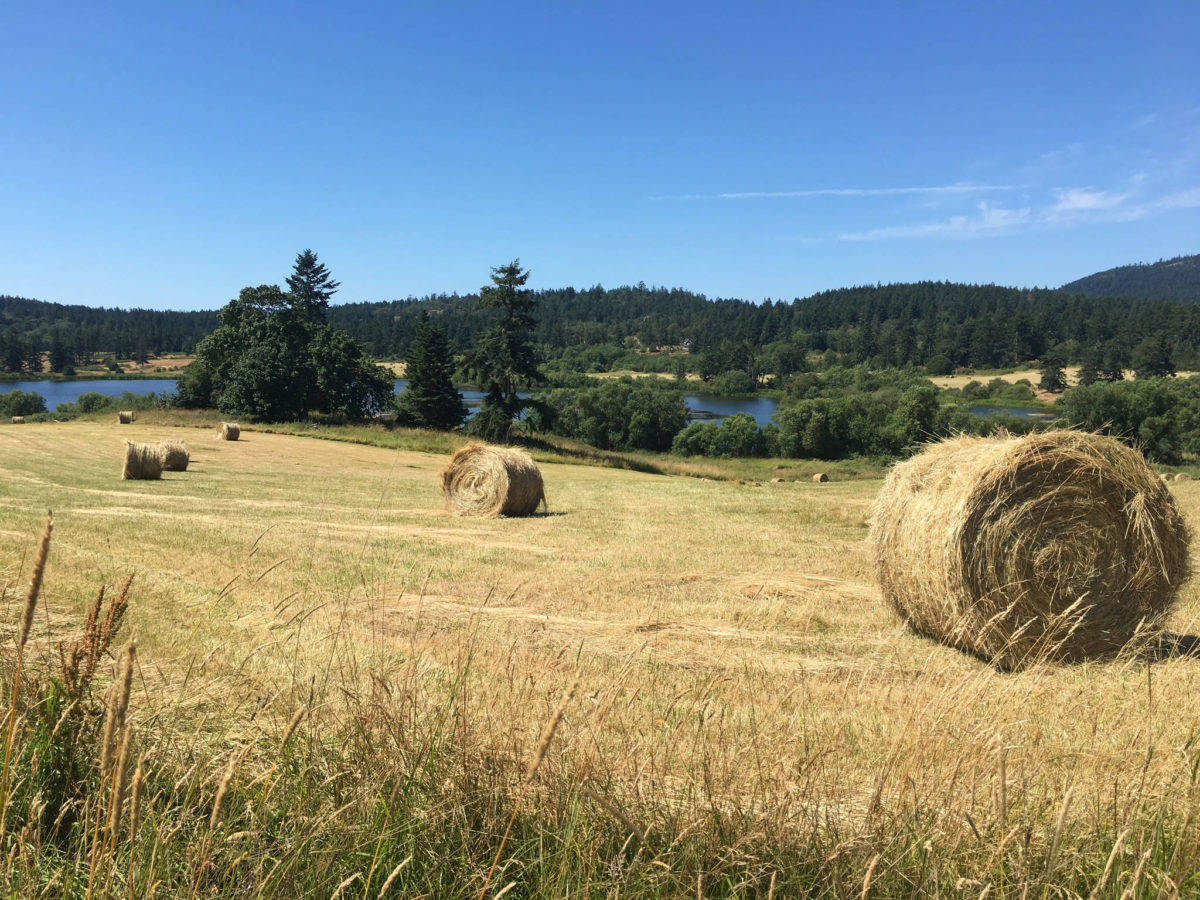When government agencies and nonprofits, join hands, with a few community members thrown in to help, the unimaginable can suddenly become reality. The San Juan County Land Bank and San Juan Preservation Trust, along with a few real estate agents, have worked together to protect thousands of acres countywide.
“It has been an amazing partnership,” Lincoln Bormann, executive director of the San Juan County Land Bank, said.
This year, the trust turns 40 years old, and the land bank is nearly 30. While they have similar goals — preserving land — each have their own methods of achieving that goal.
The first project, on which the two entities collaborated, was the 30-acre Hogback Preserve on Orcas in 1998, according to Craig Canine, the trust’s director of communications and outreach. Some of the larger, and more well known properties include Disney Mountain Preserve’s 219 acres on Waldron; Turtleback Mountain Preserve’s 1,576 acres on Orcas; Sundstrom Farm Preserve’s 116 acres on San Juan; Coffelt Farm’s 189 acres on Orcas; Mount Grant Preserve’s 121 acres on San Juan; and Zylstra Lake Preserve’s 122 acres on San Juan. Still, according to Sandi Friel, land bank commissioner and real estate agent with T. Williams on Orcas Island, the land bank statistics show that San Juan County has only 16 percent of publicly owned lands — the lowest in Washington state. King County has approximately 45 percent, while Snohomish, Skagit and Whatcom all have close to 60 percent.
Preserving land is crucial locally, Friel said, both for human and wildlife. Should the islands become overdeveloped, not only would the tourist-based economy falter, but the quality of life would decrease, Friel explained. The combined efforts of the trust and land bank has ensured the county retains its rural nature.“We complement each other well,” Canine said, explaining that the two groups split project responsibilities among them. In some cases, the titles of the preserves are held by one agency, while conservation easements are in the other’s possession, ensuring management plans will be followed.
The agencies’ most recent project is the wetland area called the Taylor property, according to Bormann. The land, off Beaverton Valley Road, includes habitat commonly utilized by Trumpeter swans during the winter. Bormann said although the sale has been closed, and the two groups own the property, funding is still needed and the trust has just begun to fundraise.
Despite the perception that real estate agents are at loggerheads with the two conservation organizations, Bormann and Canine both said that real estate agents have frequently gone out of their way to make sure sales are successful. Like when Windermere’s Greg King took time to find a donor for the Taylor project, even though he represented the seller, Bormann said.
“[King] understands the value of protected land to conservation-minded buyers,” Canine added.
The land bank frequently has real estate agents serve on their board of commissioners, Bormann noted. Friel said with agents being in close communication with buyers and sellers, they are often the first to know what is occurring on what properties.
With the entities being partners, Bormann added, real estate agents have the opportunity to educate off-island buyers about the land bank and the local environment.
Essentially, it takes all community members to preserve and conserve, as displayed through donor and volunteer needs, Canine said. Even the process of knowing what properties are available for conservation requires public assistance.
Some of the many ways the trust hears about potential projects, according to Canine, include owners contacting them for help with conservation easements. Islanders often let the trust know if a parcel is for sale, the land bank reaches out when a partnership is needed, and the trust’s board and staff keep an eye on the market.
Combining forces has proven advantageous on a couple of different levels, according to Canine. As a government agency, the land bank has the ability to apply for state and federal grants and funds through their real estate excise tax, while the trust, as a nonprofit group, has different grants it can qualify for, fundraising and private donor connections.
The result has been approximately 15 preserves acquired together, totaling 2,702 acres throughout the county that are protected.
“Virtually all the projects we worked on together, [the land bank] could not have done alone,” Bormann said.




